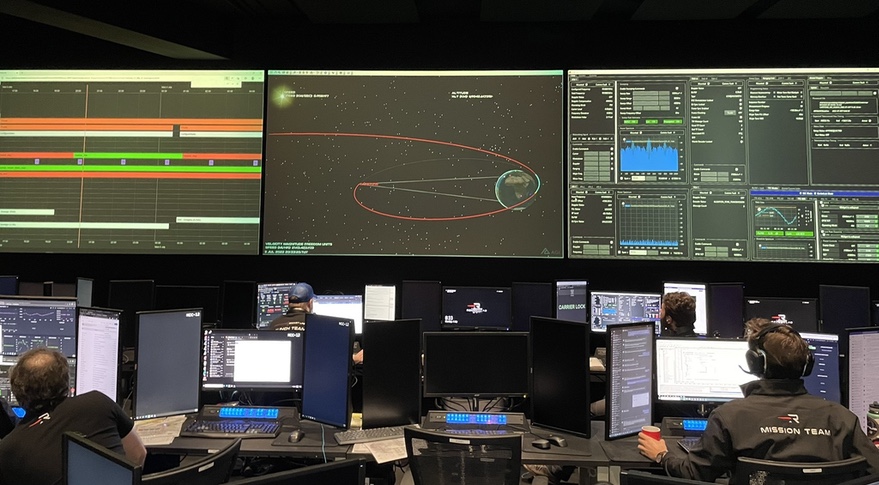Products You May Like
WASHINGTON — A NASA-funded lunar cubesat is on its way to the moon July 4 after a series of burns by a Rocket Lab transfer stage.
Rocket Lab’s Lunar Photon stage released the Cislunar Autonomous Positioning System Technology Operations and Navigation Experiment (CAPSTONE) cubesat at 3:18 a.m. Eastern, shortly after the seventh and final burn by the Photon’s HyperCurie engine that placed the vehicles onto a ballistic lunar trajectory.
Rocket Lab’s Electron launched Lunar Photon and CAPSTONE June 28, placing them into a low Earth orbit. Lunar Photon then performed maneuvers to increase the apogee of its orbit, reaching 70,000 kilometers before the final translunar injection burn.
Advance Space will take over operations of CAPSTONE, a 12U cubesat built by Terran Orbital. The NASA-funded mission will enter a near-rectilinear halo orbit around the moon to test the stability of that orbit ahead of future Artemis missions, including the lunar Gateway, that will operate there. It will also test autonomous positioning technologies through a link to the Lunar Reconnaissance Orbiter. NASA is spending about $30 million on CAPSTONE between its contracts with Advanced Space and Rocket Lab.
“Getting to this point, we have learned a tremendous amount already, and the time has come to execute our unique expertise for this monumental moon mission for NASA,” Brad Cheetham, chief executive of Advanced Space, said in a statement.
CAPSTONE will take more than four months to go to the moon, flying a low-energy trajectory that will take it 1.2 million kilometers from the Earth. That trajectory will minimize the propellant needed to enter lunar orbit in a maneuver scheduled for Nov. 13.
CAPSTONE was Rocket Lab’s first mission beyond Earth orbit. The company is developing a privately funded Venus probe mission that will be similar in design to CAPSTONE and Lunar Photon for launch on an Electron as soon as next year. The same architecture could be used for other solar system missions as well, the company says.
“We’ve built really impressive, low-cost access to not only the moon but to asteroids and other planets in our solar system,” Peter Beck, chief executive of Rocket Lab, said in remarks on the company’s webcast of the CAPSTONE deployment. “This marks the beginning of a new scientific era where, for some tens of millions of dollars, you can go to the moon or you can go to an asteroid or you can go to Mars or Venus.”
The CAPSTONE launch was Rocket Lab’s fourth Electron mission of the year. The company said the next Electron could roll out as soon as next week but has not disclosed a launch date or customer for that mission.
